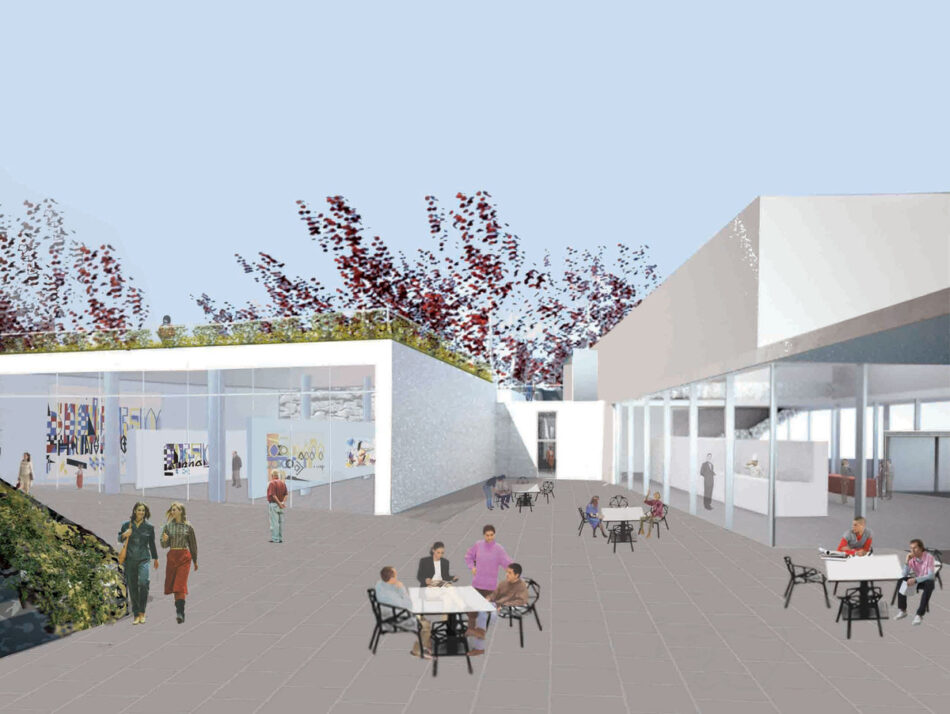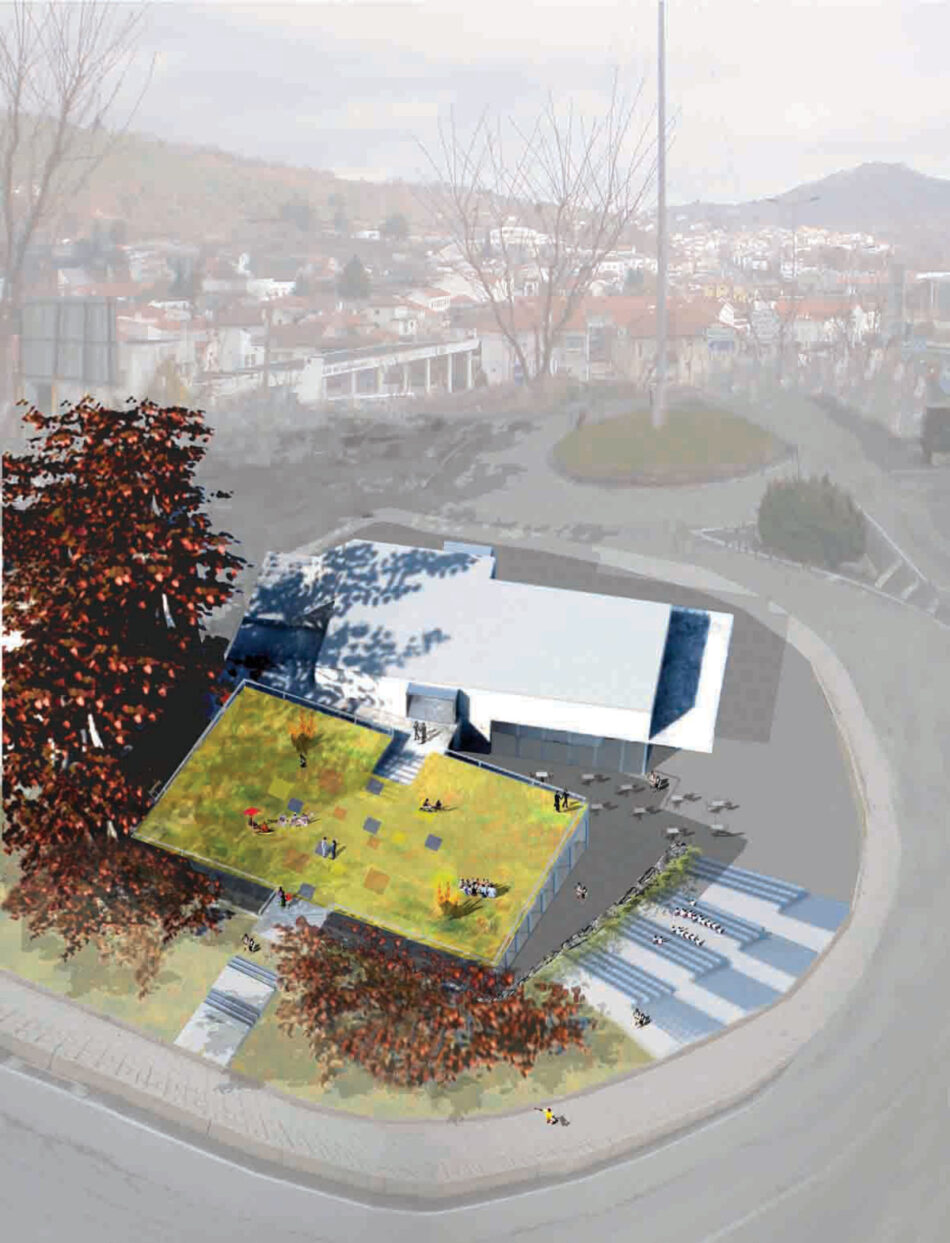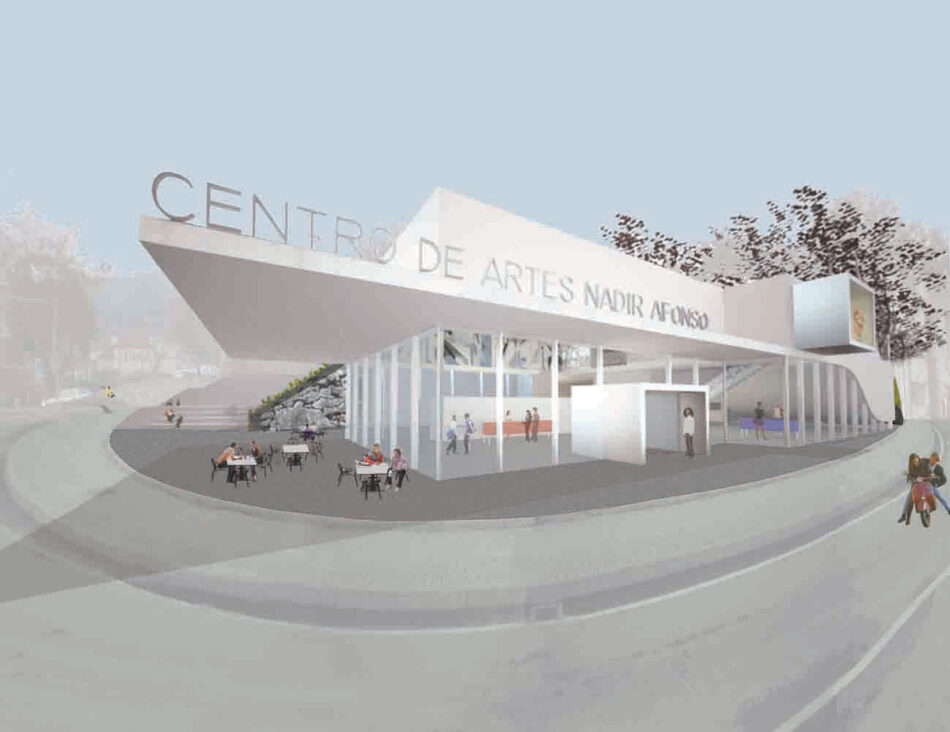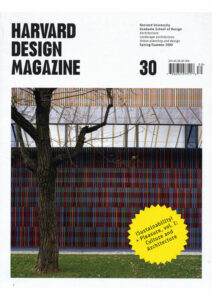The Joy of Less
“Waste not, want not.” Chipper, smug, old, this green adage has all the appeal of a thrice-used teabag. More-over, hidden behind its virtue is the dirty truth about sustainability: If we don’t waste, it’s probably because we don’t really “want.” Desire, pleasure, what we want, is a function of freedom, not prudence and constraint. We who want revel in waste.
Listen to one such reveler, Jack Gladney, hero of Don DeLillo’s novel White Noise (1985), as he shops with his family in the mall:
When I could not decide between two shirts, they encouraged me to buy both. When I said I was hungry, they fed me pretzels, beer, souvlaki…. They were my guides to endless well-being…. I shopped with reckless abandon. I shopped for immediate needs and distant contingencies. I shopped for its own sake…. I began to grow in value and self-regard. […] Brightness settled around me…. I traded money for goods. The more money I spent, the less important it seemed. I was bigger than these sums…. These sums in fact came back to me in the form of existential credit.1
What hope is there for sustainability when conspicuous consumption holds all the cards for pleasure: self-realization, aesthetic transport, spiritual transcendence?
Parodic as this waste artist might appear, Jack Gladney demonstrates the philosophical entanglement of pleasure in the idea of limitless freedom. The constitutional rights to “life, liberty, and the pursuit of happi-ness” are in fact one single right, its elements inextricably inter-implicated. The aesthetic equivalent is the “dis-interested interest” of Kantian beauty, a taste of virtual possibility without the limiting condition of actual consequences. “Negative capability,” the gift of the Keatsian poet, is the imaginative flexibility to entertain uncertainty, to be “open-minded” rather than confined to the sharp contours of determinate identity. No gesture so blatantly asserts this freedom as imprudent, heedless waste. Runa Islam’s 2004 film Be The First To See What You See as You See It presents a woman ever so slowly pushing china cups and teapots off their pedestals. We watch them shattering into starburst shards in a strange state of fascination, joy, release that approaches the sublime.2 Pipilotti Rist evokes a similar euphoria in her video installation Ever Is Over All (1997), as a woman ecstatically walks down a street while smashing car windows with an exotic flower stock in full view of a smiling police officer. Perhaps the ultimate expression of the pleasure-waste relation is Vladimir Nabokov’s Lolita (1955), which junks nothing less than Western morality in the name of sheer “aesthetic bliss.”3
For Nabokov, of course, this ultimate pleasure is precisely the opposite of the prepackaged gratifications arising from mass consumerism, and herein lies the comedy of DeLillo’s shopper-aesthete. But the line between Jack Gladney and Humbert Humbert is paper-thin. They are both sensualists, sensationalists, participants in the “pleasure economy” of an “age of surplus.” Nancy Bentley has traced this consumerist aesthetics to the pragmatist philosopher William James, who was much influenced in turn by the theories of Penn economist Simon Patten’s 1907 book The New Basis of Civilization. According to Bentley, “pleasure” for James and Patten is shorthand for “the new range of experiences … that multiply under the aegis of a consumer-driven economy…. What if we were to recognize value, James asks, in terms of enjoyment rather than productive work? What if doing and thinking were both different extensions of the same motive force of eagerness? If meaning were redefined by ‘feelings of excited significance’ … [and] sensory experience and pleasure [were] an index of pragmatic truth?”4
The prophet of this “value as pleasure,” in James’s eyes, was Walt Whitman. Significantly for our purposes, Whitman’s aesthetics turned on the experience of excess. His poetic lines run on and on, defying meter and measure to accommodate immoderate lists of phenomena and hosannas to the inexhaustible possibility he identified as “America.” It was from city life, Bentley claims, that he took his inspiration: “Whitman looks to the phenomenological topography of a pleasure economy in which urban crowds, transport systems like ferryboats and omni-buses, strolling laborers, women’s and men’s fashions, shops with ‘great windows’—in short, any and all sites that afford ‘gayety and motion on every side’—are sources of the pragmatic truths of ‘excitement’ and thus carry a potential for public significance. For James, Whitman is carrying out the new pleasure economy work, an ‘occupation’ in which seeking corporeal feeling and immersion in human crowds count as ‘business sufficient and worthy to fill the days of a serious man.’”5
This equation of pleasure with the endless variety of city life is also central to the sensibility of European modernists, as we see in Charles Baudelaire’s flâneur, Gertrude Stein’s Parisian window shopper, André Breton’s surrealist vagrant, and André Gide’s “disponible” immoralist, all glutting themselves on the heterogeneity and intensity of urban sensation. A century of technological advances has only increased the scope for openness and excess, until today we may experience a “global sublime,” a delirious expansion of self into Internet infinity. The 21st-century pleasure economy permits us to exceed ourselves—ecstatically, extravagantly, waste-fully—until, like Whitman, we are “multitudes.”
The popular rhetoric of sustainability, in contrast, is all about limits on freedom and the thwarting of desire: “conspicuous austerity,” “inconspicuous consumption,” “frugal chic,” “going on a spending fast,”6 “carborexics,” “energy anorexics.”7 The proliferating mots spell out the pleasures of a hunger artist writ small: the satisfaction of never forgetting one’s reusable shopping bag or failing to separate the brown glass from the green and the clear, the bio waste from the metal and plastic. Watch those paint drips, Mr. Pollock! Green parents now have an excuse for not taking their kids to Little League practice—the drive is bad for the planet8—and green children can retaliate by chiding their elders for lolling in full bathtubs or leaving the engine idling in the pickup line.9 Such meanness has its pleasures no doubt, but they are far from the elation of unfettered self-expression, even among those of tamer tastes than the Marquis de Sade or Charles Manson.
Moreover, though conspicuous austerity may be politically correct, it has fostered dismaying responses at either end of the ideological spectrum. Ecological rhetoric on the Left can sound like hippie platitudes warmed over from the 1960s and on the Right like a justification for reactionary conservativism. “It has been just three months since the end of the Age of Excess,” announces a fashion critic gleefully, but already avant-garde design is out and “classic clothing” is in.10 One suspects that the forces of aesthetic law and order are only too pleased by the economic and ecological crises. Whereas post-modernists could reject the elegant discipline of “Less is more” with a Whitmanesque “Less is a bore,” the green police now snarl: “Less or else.”
In short, the disconnect between sustainability and pleasure is profound, at least for those of us who came of age before the new century. For today’s children, however, it may be a thing of the past. Schools are teaching ecology as a thrilling quest to save the planet, with every subject in the curriculum mobilized for its green potential.11 Disney is also doing its part. The 2008 animated film WALL-E shows Earth reduced to an uninhabitable wasteland of scrap metal and spare parts, with people removed to a shiny-jolly space station where they are swollen into blimps unable to get up from their recliners. This is what the freedom of unconstrained appetite (for food mostly, given the G-rating) looks like: Brave New World on Twinkies and TV. Controlling the space-station dystopia is a scientist-tyrant who has indoctrinated the couch potatoes in the big lie that unbounded consumption is fun, when anyone can see that consumption has under-mined every form of pleasure: passion, self-determination, even physical motion. It takes someone outside the system, a humble waste-management robot, to see through the spin. By saving a tiny green plant that has survived against all odds, WALL-E mobilizes the blimps, gains his true love, and returns life and beauty to Earth. His motto could be “Follow what you want, and you will not waste” or more succinctly, “Sustainability is pleasure.”
The next generation gap will form along this fault line between morality and pleasure. As one parent describes it, “For us, Earth Day is a reason to go outside … for [the kids] it’s a religious holiday.”12 Baby-boomer and Gen-X profligates can only sigh at the celebration of restraint that lies ahead—assuming Earth lasts long enough for their grandchildren and children to impose it. But mean-while, the future of the planet lies in the hands of elders who lack the ideological wiring to connect right action to pleasure. The problem for the forces of change is how to detach the values of self-expressivity, excitement, and ecstasy from waste, and attach them instead to sustain-ability. Seldom has an existential crisis presented itself so openly as a challenge for rhetoric.
Fortunately for the spin doctors of sustainability, considerable resources lie at hand. Pixar is not the first to create the specter of the world as a trash heap. For almost a century, literature and visual art have used this very image to depict the malaise of the modern condition. From T.S. Eliot’s The Waste Land to Thomas Pynchon’s W.A.S.T.E. system in The Crying of Lot 49 to the waste-manager protagonist of Don DeLillo’s Underworld, 20th-century literature has been an ecological meditation avant la lettre. T.S. Eliot laid out the terms in his 1922 masterpiece, with its cast of amoral pleasure-seekers un-anchored in faith, their lives bereft of value or meaning. The glories of past culture endure as only a “heap of broken images” in which one “can connect/Nothing with nothing.” The waste metaphor effected an important rhetorical realignment: In place of pleasure as the response to the inexhaustible variety and freedom of urban modernity, it gives us the anomie of life in an “Unreal City” and “fear in a handful of dust.”
Eliotian dismay and Whitmanesque exuberance co-exist in 20th-century culture, correlating roughly to elite versus populist art. Beginning in the 1960s, postmodernists struggled to bridge this gap. In John Barth’s novels of “exhaustion,” characters are paralyzed by a world of unlimited choices, until love enters to create priorities.
In Barth, unlimited freedom is an affliction rather than a source of pleasure; it can be alleviated only when desire imposes restrictions.
Thomas Pynchon held out for an even more rigorous solution. The Crying of Lot 49 (1966) presents endless variety as a duality: random, meaningless entropy on the one hand and on the other, a storehouse of potential meaning. The novel’s W.A.S.T.E. system is a secret, whacky underground communication network that exists—if it exists—in opposition to the official world of conventional reality, “America.” The trick is to gather W.A.S.T.E. into America and watch the “interest”—psychological, economic—accumulate. “Interest” is the inverse of both Eliotian anomie and Whitmanesque delirium. It arises in the painstaking effort to find order in entropy, a quest that can never definitively end (except in death). The wasteland is redeemed only in the moment-to-moment research that constitutes engagement, and freedom is the choice of continuing to investigate.
By the time we come to Don DeLillo’s Underworld (1997), Eliot’s “heap of broken images” has morphed into the atomic fallout that launched the Cold War. Underworld shows America working through the threat of a literal wasteland, from the sanitized constraint of the 1950s to the chastened hope of ecology in the 1990s. The lost protagonist of the early pages ends up a waste-manage-ment expert who has learned to see in garbage the archaeological record of civilization and to salvage the wreckage of his emotional life for some semblance of peace and love. The novel shows a parallel development in culture, as a woman artist abandons her alienated abstractionism and ends up recycling trashed war matériel into passionate, representational sculpture.
Through its redefinition of freedom and excess, postmodernism created a frame of reference in which the disconnect between sustainability and pleasure was mitigated.13 This same reassignment of emotional values, mutatis mutandis, is now at work in the popular imagination, in quips like “recessionista” or “staycation,” examples of a green “both/and” rather than a wasteful “either/or.” The pleasure of these figures, such as it is, lies first in the “twofer”—having one’s (low-calorie) cake and eating it, too—and second, in being released from the burden of choice altogether. As we have seen, a disenchantment has set in over choice for choice’s sake, an exhausting capitalist “affluenza”14 of distinctions without differences. It may be the case, as the sociologist Pierre Bourdieu claims,15 that we derive profound pleasure and security from class and status affiliations defined through arbitrary distinctions, but the imperative for exclusivity with its casting out or marginalization of the “other” seems more and more wasteful and old-fashioned. In the ethos of the Internet and globalization, inclusiveness is a positive virtue. Consider the generally high approval ratings of President Obama’s all-embracing Cabinet picks.
Still, if this realignment of values strikes you as a little earnest and being a “recessionista” doesn’t ring your bells, you can always go dancing. At Watt, a nightclub in Rotterdam, having fun helps the planet: “The better the music, the more people dance, the more electricity comes out of the floor. … The concept is you party like you always do, but here it will be better for the earth.”16 Watt effects a literal magic in which pleasure generates both energy and social approval. The dancing itself may not reverse global warming, but Watt’s attachment of pleasure to moral action is the move that will. It exploits a rhetorical resource inherent in the concept of recycling: the thrill released when straw (or worse) turns to gold. It is a desire that powers science as much as fairytale. Faced with Malthus’s grim prognosis that humanity will inevitably outrun its resources, the 19th-century social philosopher Pierre Leroux countered with “one of the best lines in the history of economics: ‘All that is needed to answer Malthus is human excrement.’ … France would save on imports of guano and increase the fertility of its land by saving human waste and applying it directly to fields.”17 Historian John Tresch identifies this “circulus” between production and consumption as the principle behind Leroux’s “ecstatic materialism,” pleasure released through transformation. Recycling is miraculous, like the parable of loaves and fishes or the perpetual motion machine. “Those are pearls that were his eyes. Look!”18
Artists set in motion this very circulus when they transform the detritus of art history into powerful new works. The team of Chadwick & Spector, for example—his first name, her last—make a practice of visiting the storage closets of museums in search of forgotten images of women. Their effort links ecology with feminism through concern over squandered resources— natural, human, or aesthetic. When the pair find a picture they like, they project it onto the naked body of Chadwick, and Spector paints it on this “canvas” and then photographs the result. If woman is the “bearer of the male gaze,” Chadwick shares the burden with her, and in doing so, turns it into comedy. In Portrait of Nell Gwynn as St. Catherine, after Sir Peter Lely, Chadwick’s eye is Nell Gwynn’s eye, which is St. Catherine’s too.
John Kindness is a recycler not only of aesthetic images but also of actual garbage. He discovered a burnt-out car by a canal in his London neighborhood, and pro-ceeded to decorate it in lacy patterns of white oil stick, much to the amusement of the locals. A kinship sprang up among graffiti, frost, and lace in the process, and lace—old-fashioned, domestic, feminine—gained a measure of heroism in facing down “crash and burn.” The sculpture transformed not just the physical car but the entire context in which it arose: the isolated footpath and its graffiti-covered wall, the canal with its steady stream of trash barges, the whimsical artist and his neighbors, and the litterer who abandoned the car in the first place. These discrete elements coalesced into an environment, and an interactive one at that. A few months after the lace car was finished, a wrecked motorbike showed up on the path so that Kindness could continue the conversation.
Along with the pleasure we take in magical transform-ation is the thrill of rising to a challenge. A rhetoric of gamesmanship and ingenuity is much in evidence in the discourse of sustainability.19 A writer, Colin Beavan, is spending a year trying not to harm the planet, a year of “no trash, no carbon emissions, no toxins in the water, no elevators, no subway, no products in packaging, no plastics, no air conditioning, no TV, no toilets.”20 He’s Thoreau in the City, with a book or movie deal for the harvest. The experimental life, the all-but-unwinnable bet: Adventure and dare create pleasures dear to the American psyche, rewriting work into play, morality into aesthetics.
In short, a rich rhetorical repertoire is on hand for connecting sustainability to pleasure, and the alert architect can marshal it all to good effect. One example is a museum project soon to be built in Boticas, a hill town in northern Portugal dating back to the Middle Ages. The only civic structures in Boticas so far are a medieval jail turned public library and a modernist city hall, but since EU money has brought a national highway to the town, and Nadir Afonso, Portugal’s greatest living artist, lives there, a Centro de Artes Nadir Afonso was more or less inevitable. The choice of the New York architect Louise Braverman had its inevitability too. Her low-income housing project in Chelsea won award after award for its livability, cost-effectiveness, and aesthetic excellence, and she admits no clash between the demands of green architecture and beautiful architecture: “The product at the end has to be better because of its sustainability.”21
Braverman’s Boticas design is a treasure house of green rhetoric: Tom-Swiftian gamesmanship, the magic of the “twofer,” the inclusiveness of artistic contextualism. Given a sloping site, Braverman places the exhibition gallery underground to save on heating, uses the exca-vated granite as retaining wall, and covers the gallery roof in a lawn that doubles as insulation and public park. The retaining wall will be planted with vines visible from the exhibition hall, so that the local art by Nadir will appear against the local vegetation. This contextual-ization continues in the skewed axis of the building, which echoes the spatial coordinates of the town. Because the spaces above the submerged gallery are mostly made of glass, the museum axis never lets visitors ignore their relation to the natural and urban setting. Making “a there there” is the central goal of the project. Without added size or cost, Braverman multiplies the original functions of the museum indoors and out to create a focal center for the community day and night in any season.
Contextualization is one of ecology’s most powerful rhetorical resources. If we accept that everything we do impacts our community and ultimately the earth, the isolation and alienation of the individual becomes un-tenable as a notion, and so does their attendant malaise. Green food writing is particularly illuminating on this score. “Locavores” such as Michael Pollan advocate eat-ing what is available seasonally and locally, not only because it cuts down on the fuel used for trucking and supports area farmers, but also because it provides the pleasure of being situated in space, time, and collect-ivity.22 “If you want to eat in something like harmony with the seasons,” writes scholar-foodie María Rosa Menocal, “it is eminently possible to do so by shopping for most of your food from Union Square and other New York Green-markets…. [E]ating seasonally and locally [allows us] to cultivate relationships within the universe of our food-buying, not only with the farmers but also with other shoppers, which means many of the great chefs and other enthusiastic cooks in the city.”23 Suddenly Manhattan in the depths of winter is not an “unreal city” of faceless crowds but a chatty marketplace where a community gathers to cultivate life-sustaining, planet-sustaining pleasures. We have come a long way since The Waste Land, in a circulus that represents not just a shift in rhetoric but, we can hope, an ecological revolution as well.




